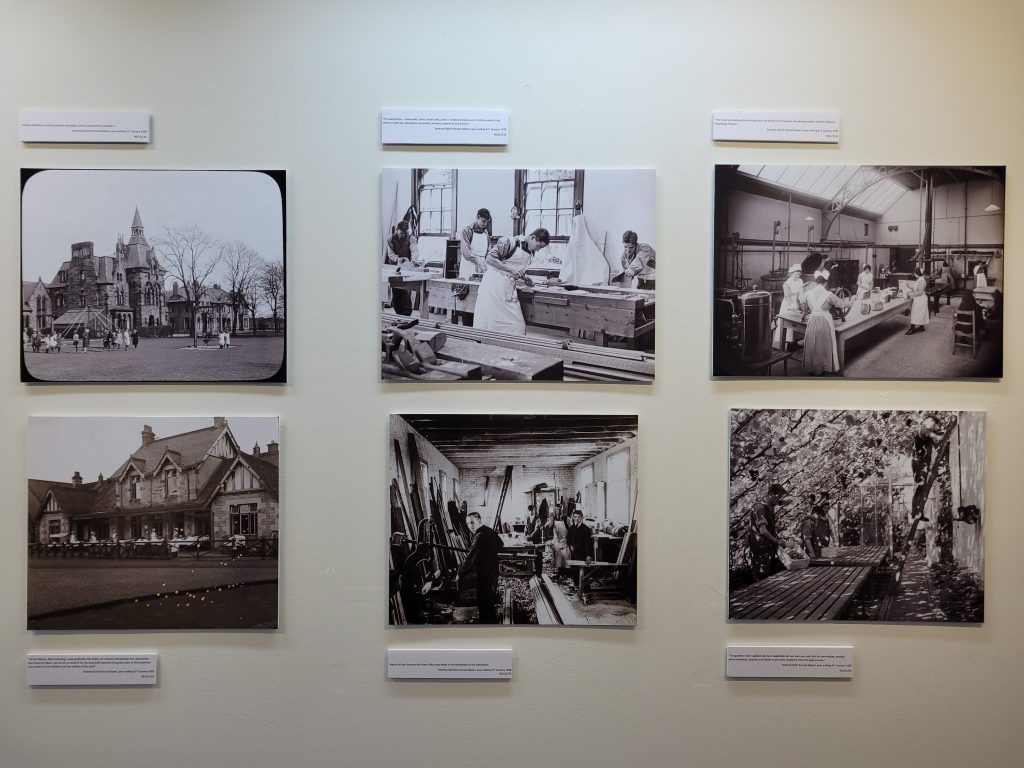On display in the University Library this semester are some beautiful photographs from our Royal Scottish National Hospital (RSNH) Archive.
The Royal Scottish National Hospital was founded in 1862, intended for children with learning disabilities aged between six and twelve, although older and younger children were soon taken. The Colony opened in September 1935 to allow more space for residents who were admitted as children but were best suited to remaining at RSNH into adulthood, creating a lifelong community within the grounds. The institution was innovative in its approach to caring for children and was visited by medical professionals from all over the world.
Because the RSNH was subsumed into the NHS on its formation in the 1940s, the RSNH Archive forms part of our NHS Forth Valley Archive, which is among the most used collections here at the University year after year, being consulted by family history researchers, dissertation students, academics and creative practitioners.
The archive contains extensive records relating to prospective and admitted patients, administrative records, some small amount of information on staff and a series of wonderful photographs of the Royal Scottish National Hospital – showcasing the beautiful buildings, grounds and farmland, as well as the staff and patients who spent their time there. In 2013, the archive was inscribed on the UNESCO Memory of the World UK Register in honour of its outstanding national importance.
In 2022 we received an exciting new accession to this collection in the form of two boxes of glass plate positives, or ambrotypes, which NHS staff had discovered hidden away. These glass plates have now been digitised using our wonderful StirScanStudio and while some are clearly for more clinical purposes, a great many of them were taken to showcase what life was like for the children at RSNH and feature quite strongly in the institution’s annual reports of the period. Without these images – showcasing sporting endeavours, recreational activities and the work undertaken by able patients to occupy their minds, give them a sense of purpose and satisfaction, teach them a skill and, where possible, encourage them to enjoy fresh air – the daily lives of these children would be reduced to short paragraphs within annual reports that comment broadly on a whole year at a time. Though promotional, these images capture lovely moments within the lives of patients whose records, otherwise, are almost entirely clinical.
A selection of these images is on display in the University Library and the Archive Reading Room exhibition cases display additional photographic material and examples of the annual reports which provide some wonderful context to these images – that produce from the farm was sold to raise money for the institution as well as feeding its residents and one of the Colony buildings was furnished entirely by creations from the institution workshop and so on.
So the next time you need a study break, wander by the Library Reception and have a look at what life was life for residents of the Royal Scottish National Hospital in the 1930s.


